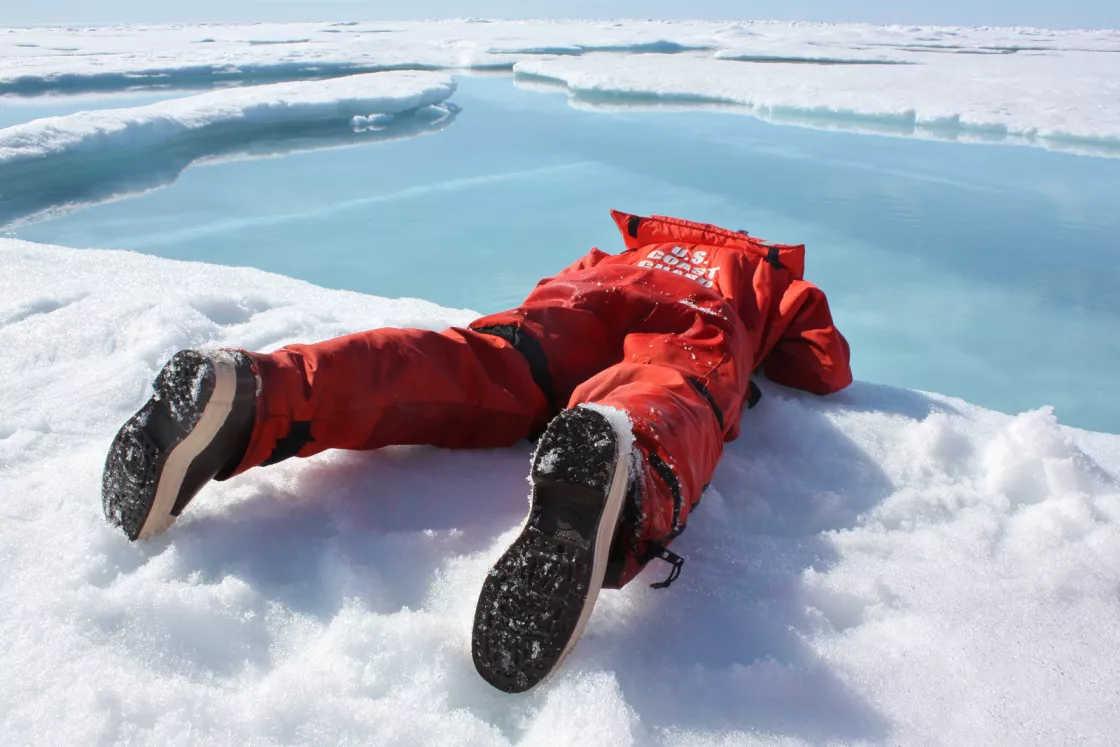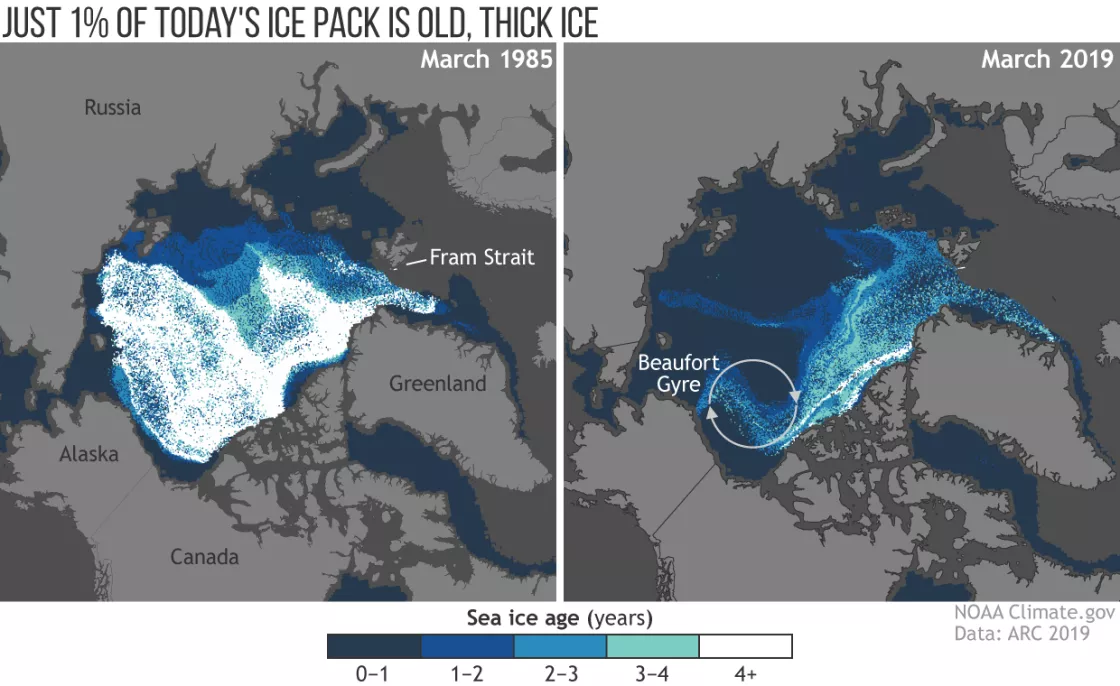Unlike people, animals, news stories, and sitcoms, Arctic sea ice has not gotten older with time—it has gotten younger. Very little old ice, typically four years old or older, remains. During the 1980s, this old ice covered a substantial portion of the Arctic Ocean, especially as the sea ice reached its maximum extent in March. In 2019, however, ice at least four years old covered just 91,000 square kilometers (35,000 square miles) or 1.2 percent of the Arctic Ocean. Though the oldest, thickest ice fluctuates in percent coverage, the amount is now far below mid-1980s levels, when over 2 million square kilometers (772,000 square miles) or around 35 percent of the Arctic Ocean was composed of ice older than four years.
The difference between young and old sea ice
Each autumn, large parts of the Arctic Ocean, and the far northern Atlantic Ocean and Bering Sea, freeze over with a thin sheet of ice, known as first-year ice. Paper thin at the start, first-year ice thickens throughout the winter, and may eventually reach 1 to 3 feet in thickness.
Once spring and summer arrive, most of this first-year ice quickly melts. If, however, it survives summer, it is promoted to multiyear ice. Sea ice that survives for years keeps thickening over time, most often through congelation on the bottom of chunks of ice. Ice can also thicken when ice layers pile up on top of each other, driven by winds or ocean currents. In rough waters, waves may flood the ice, where the floodwater may later freeze. Snow accumulating on sea ice may weigh it down, enabling seawater to flood the ice surface and subsequently freeze. Through any of these processes, multiyear ice can swell to 6-feet to 25-feet thick.
Under the same temperature and weather conditions, thick ice takes longer to melt than thin ice, so thick ice is more likely to survive the melt season. Likewise, since lower salt content raises water's freezing temperature, and since multiyear ice squeezes trapped salt out through tiny channels as the ice grows, it gains another defense against melt through lower salinity.
An increase in the amount of thin first-year ice drastically alters the dynamics of sea ice in the Arctic. Thinner ice is easier to fracture. Winds and currents push thinner ice around more easily, flushing it out of the Arctic faster than multiyear ice.
When storms rage through the Arctic, first-year ice is less likely to withstand waves in a turbulent ocean. In August 2012, a very strong storm formed over the coast of northeastern Eurasia and quickly surged to the central Arctic Ocean. After several days of high winds, the storm broke up the thinning ice pack, pushing ice out into warmer ocean waters and contributing to the record-low extent set in September of that year at 3.39 million square kilometers (1.31 million square miles).
How Arctic sea ice has gotten younger
The Arctic Ocean is a better environment than the Southern Ocean surrounding Antarctica to create and maintain multiyear ice. In contrast to the Antarctic—where sea ice fringes a continent and can spread out over a vast ocean—the Arctic is an ocean basin largely surrounded by landmasses. In the Antarctic, winds and ocean currents can easily push ice toward lower latitudes and warmer waters. In the Arctic, surrounding landmasses generally constrain ice movement. Ice does leave the mostly landlocked Arctic Ocean, though, generally flowing southward through the Fram Strait east of Greenland.
Historically, the Arctic Ocean offered young ice a built-in nursery where it could thicken. A looping current north of Alaska, the Beaufort Gyre, recirculated ice, giving it a chance to persist and thicken. This ice-growing current roughly offset ice flow out of the Arctic via the Fram Strait. Since the start of the 21st century, however, summers in the southern arm of the Beaufort Gyre have become warmer than tender young ice can survive. Though old ice continues to exit the Arctic through Fram Strait, very little is rebuilt.
What Benjamin Button ice means for the Arctic
As the global climate warms, increasing air and ocean temperatures more easily destroy first-year ice, weaken the multiyear ice that remains, and perpetuate the cycle of decreasing sea ice extent. If this cycle continues and resilient multiyear ice disappears from the Arctic Ocean, scientists estimate that the world may see ice-free summers in the Arctic well within this century, potentially as early as 2030.
References
Perovich, D., et al. (2019). Sea ice. 2019 Arctic Report Card.
Polyakov, I.V., J.E. Walsh, and R. Kwok. 2012. Recent changes of Arctic multiyear sea ice coverage and the likely causes. Bulletin of the American Meteorological Society 93: 145-151.

